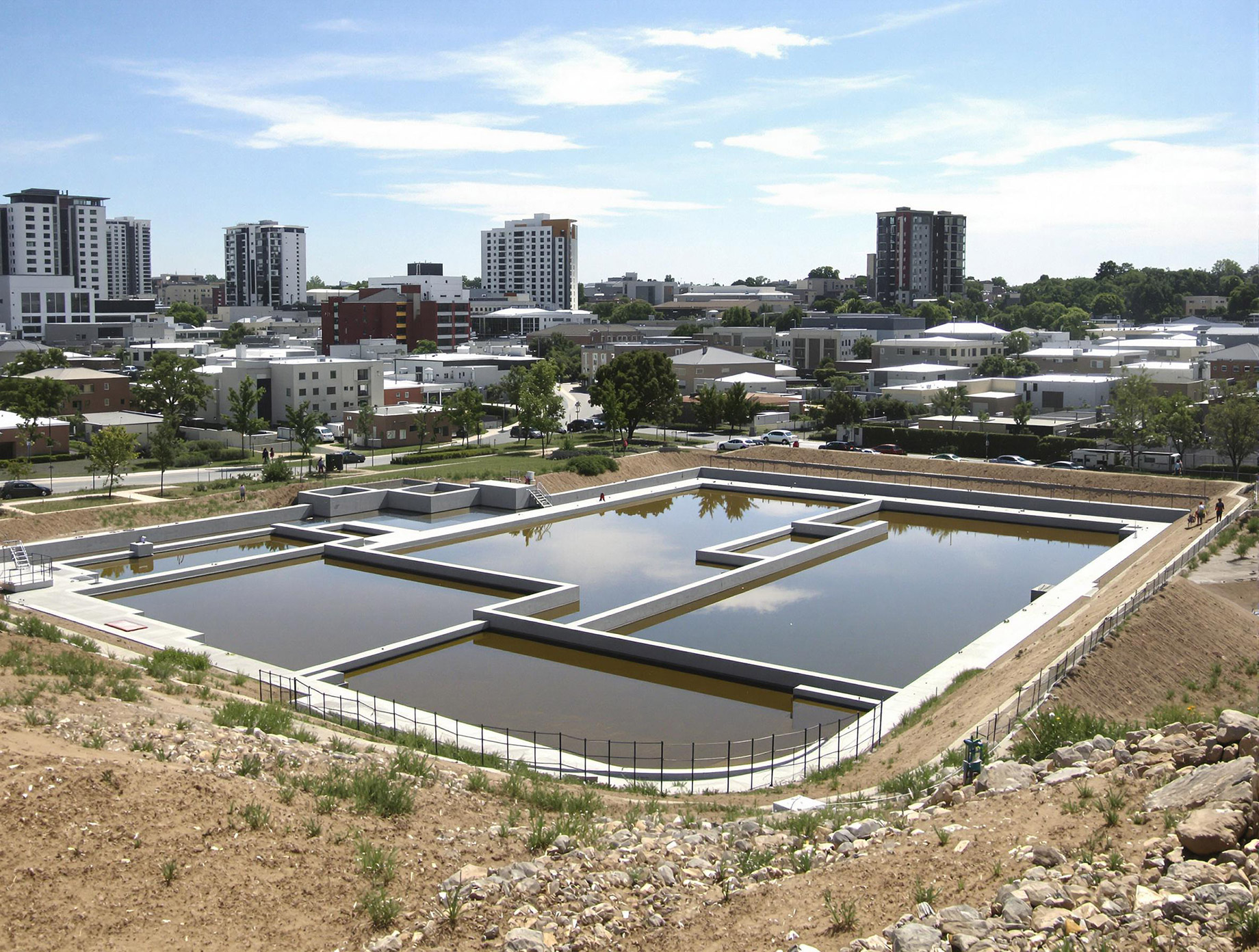
An On-Site Detention (OSD) system is a crucial component of modern stormwater management in urban and industrial areas. Its primary function is to temporarily store excess rainwater runoff, preventing the overloading of stormwater systems and minimising flooding risks.
These systems are becoming increasingly vital for properties subject to strict regulations on stormwater drainage, and their installation is required for a wide range of developments. This blog will explore which types of properties need an OSD system and why their implementation is very important.
Types of Properties that Require On-Site Detention System
1. Residential Developments
New residential developments, including apartment complexes, townhouses, and subdivisions, are required to manage stormwater runoff to avoid contributing to local flooding issues.
In these cases, the OSD tank acts as a crucial stormwater management solution. Residential properties generally have large impermeable surfaces that do not allow water to infiltrate the ground. The OSD system ensures that excess water is safely detained and released gradually into the stormwater system.
2. Commercial Properties
Commercial developments such as office buildings and shopping centers also require OSD systems. These properties have even larger impermeable surfaces than residential properties, including parking lots and concrete walkways, which significantly increase the amount of stormwater runoff during rainfall.
For these properties, an OSD system is necessary to mitigate the impact of runoff on surrounding areas and prevent flooding on the property itself. Proper management of stormwater through on-site detention tanks helps reduce the strain on municipal infrastructure.
3. Industrial Properties
Industrial properties, such as factories, warehouses, and manufacturing plants, require stormwater management systems due to the scale and nature of their operations. Many industrial sites have extensive concrete or asphalt surfaces, making it difficult for water to be absorbed into the ground. The OSD system becomes an essential tool in regulating the flow of stormwater and ensuring it is discharged in a controlled manner, preventing localised flooding or erosion.
Additionally, industrial sites might have specific contaminants in runoff, such as oils or chemicals. In such cases, the OSD tank must be designed with additional filtration or treatment features to handle these pollutants before discharge.
4. Public Infrastructure and Community Buildings
Public infrastructure, including schools, hospitals, government buildings, and recreational facilities, require an OSD system due to their size, the volume of runoff they produce, and their public importance. These properties often have large parking lots, roadways, and other paved areas that exacerbate runoff problems.
OSD system helps to ensure that runoff is efficiently stored and released, contributing to flood prevention and water quality protection in the local community.
5. Mixed-Use Developments
Mixed-use developments, which combine residential, commercial, and recreational spaces in a single project, need an OSD system to manage the runoff requirements of each use. These developments can involve extensive hardscaping, such as parking lots and paved walkways, leading to large amounts of rainwater runoff.
An OSD system in a mixed-use development ensures that stormwater is collected and detained on-site before being released at a controlled rate into the public drainage network, helping to prevent flooding both within and outside the development.
Understanding the OSD System Necessity
It’s important to note that while many property types benefit from an OSD system, not all properties are required to install one. The need for an OSD system depends on factors such as the size of the development, the volume of stormwater runoff, and the specific regulations of the area.
Smaller residential properties or those in regions with less stringent stormwater management regulations do not always require an OSD system. Ultimately, determining whether an OSD system is necessary is best done through consultation with local authorities or stormwater management professionals who can assess the property’s needs and ensure compliance with environmental guidelines.
Why is an OSD System Important?
Flood Prevention
Flooding is one of the most immediate concerns when it comes to stormwater runoff. Without proper management, excess runoff can overwhelm drainage systems, leading to localised flooding. By installing an OSD system, property owners can reduce the likelihood of this happening by controlling the flow of rainwater and preventing the overloading of municipal stormwater infrastructure.
Environmental Protection
Uncontrolled stormwater runoff can carry pollutants like oils, chemicals, and debris into waterways. An OSD system helps protect the environment by allowing water to be stored and filtered before being released into the stormwater system. This helps prevent contaminants from reaching rivers, lakes, and coastal areas.
Compliance with Regulations
In many regions, local councils and state governments have strict regulations concerning stormwater management. Developers and property owners must adhere to these regulations to avoid penalties. Installing an OSD system ensures that properties comply with stormwater detention and discharge requirements. This allows for smooth development processes and operations.
Erosion Control
When rainwater flows over land at high speeds, it can cause soil erosion, particularly in areas without adequate vegetation or natural filtration. By detaining water on-site and releasing it gradually, an OSD system helps reduce the erosive power of stormwater, protecting landscapes and infrastructure from long-term damage.
Conclusion
Incorporating an OSD system is crucial for properties that experience significant stormwater runoff. For developers and property owners, understanding when and why an OSD system is needed helps make informed decisions that contribute to both sustainable development and long-term environmental protection. Ultimately, installing these systems is an investment in a safer, more resilient future for both individual properties and the community at large.